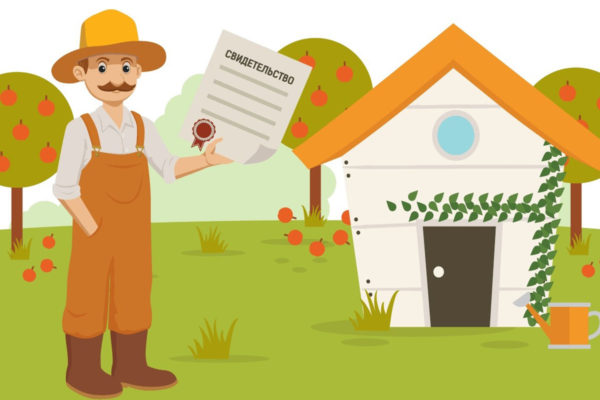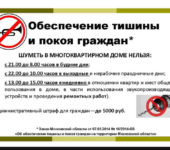Registration of a suburban area in ownership, procedure and necessary documents
Many city dwellers have summer cottages outside the city on the territory of non-profit horticultural associations (SNT). However, the ownership of a land plot does not give the owner the right to dispose of it at his own discretion without proper registration. This means that all plots with residential buildings that were obtained before 2001, that is, before the adoption of the Land Code and were not included in Rosreestr, are not the property of the owner and can officially go to the state. This article will tell you how to register ownership of land, what documents are needed for registration and how much it will cost the owner to register a suburban area.
The content of the article
Status and land surveying
In accordance with Art. 11 Land Code, a land plot is a part of the land surface, the boundaries of which are determined by law. All lands in the Russian Federation, depending on the intended purpose, are of seven categories. Dacha plots are agricultural land. According to the Federal Law, since the beginning of 2019, all country land plots have been divided into two types - garden and vegetable gardens.
The first ones are intended for gardening and dacha farming. They are allowed to build a major country house. Garden plots are intended for gardening, without the right to build capital buildings.
In addition, in 2019, amendments were made to the Land Code of the Russian Federation, which provide for mandatory land surveying of the suburban area. Land surveying is a procedure of coordinate-wise designation of the territorial boundaries of a site, followed by drawing up a drawing with a schematic representation of the construction objects located on it. Determination of the exact area of the land plot, drawing up of drawings and land surveying is carried out by cadastral engineers. This procedure is necessary for registering a summer cottage plot in the real estate cadastre. The order of work and the regulatory framework are regulated by Federal Law No. 221.
Previously, land surveying was the most expensive part of the design of summer cottages, however, according to amendments to the legislation from June 2015 to the end of 2020, cadastral engineers will carry out these works free of charge.
What is the design of a summer cottage for?
The amendments made to the Russian legislation put the owners of suburban land plots and residential buildings on their territory with the need to register them. Without the duly formalized ownership of the summer cottage, the following actions cannot be performed with them:
- sell or rent;
- to draw up a deed of gift and testament;
- present as collateral for a loan;
- draw up an insurance contract;
- connect the necessary communications.
In order to avoid these situations, disputable points with neighbors about the boundaries of the plot, as well as the recognition of a summer cottage plot as illegal with its subsequent rejection in favor of the state, registration of a country house and a land plot is required.
What documents are needed to register a land plot
Not all summer cottages that were passed to you or your relatives before the introduction of the Land Code were entered into Rosreestr. To find out if a plot is registered, you need to enter the cadastral number or address of your land plot on the USRN website.If the boundaries of the site are in the cadastre, it can be privatized until December 31, 2020 according to a simplified scheme. To do this, the owner of the dacha, who is a member of gardening, needs to collect and submit the following documents to Rosreestr or the MFC:
- Application for registration of rights.
- Land plot plan with exact boundaries.
- The final act, signed by the owner and neighbors, on the absence of claims regarding the location of the boundaries of the site.
- Certificate confirming the ownership of the land plot (extract from the economic book of the partnership, certificate of land allotment, etc.).
- The document establishing the legal status of the land complex (take from the administration of SNT).
- Receipt for payment of state duty.
A simplified registration scheme is possible thanks to the Federal Law, which came into force in 2006 and is popularly nicknamed the “dacha amnesty”. The essence of this law is to legalize the rights of owners of land plots and real estate objects located on them, which for some reason did not pass state registration.
However, the “dacha amnesty” does not apply to sites located in reserves and natural parks, as well as on lands recognized as cultural heritage sites and belonging to law enforcement agencies or nuclear energy enterprises.
If the situation is the opposite, that is, the plot is registered, but the house is not, then it is also possible to use the "dacha amnesty". There are also many nuances here, but registration is required only for capital buildings.
Decoration of a rented garden
To register a leased plot, the first step is to check whether it is not limited in circulation and whether its boundaries are included in the cadastre. If everything is in order, you need to contact the landlord with a buyout offer. After the transaction is completed, an agreement on the termination of the lease and a purchase and sale agreement are signed. These documents are submitted to Rosreestr or the MFC for registration of ownership. In approximately the same way, unauthorized seized areas are legalized.
Clearance of an abandoned site
Often, abandoned plots can be found in garden partnerships. If the user of such a land plot has not been issued any certificate confirming his right to this land, the legislation provides for the option of assigning the abandoned plot to the new owner.
The chairman of the garden partnership holds a meeting at which the members of the SNT vote for the withdrawal of abandoned land from the current owner and the assignment of the site to another member of this partnership. The procedure for its registration is carried out in the manner prescribed by law.
How much does it cost to register a summer cottage
The deadlines for registering a summer cottage and registering it are strictly regulated by Federal Law No. 218 and range from 3 to 10 working days, depending on the form of submission of the necessary documents. Cadastral registration is carried out without charging the applicant. However, for the registration of rights, there is a state duty established by the Tax Code of the Russian Federation.
The minimum fee of 100 rubles will be paid by individuals registering the shared ownership of an agricultural land. When registering a summer cottage, an individual will have to pay 350 rubles. Registration of a land plot with a capital building built on it or a plot for individual housing construction will cost 2 thousand rubles. In addition to the state duty, when collecting the necessary documents for registering property rights, you need to pay 750 rubles for an extract from the USRN.
The legislation provides for the following categories of citizens who are exempt from paying state fees:
- natural persons recognized as poor in accordance with the Housing Code;
- veterans and invalids of the Second World War;
- concentration camp prisoners;
- persons who vacated living quarters in connection with the renovation of the housing stock.
In conclusion of the article, it should be noted that the simplified scheme greatly facilitates the procedure for citizens to register ownership of summer cottages, buildings located on them. Recall that the State Duma adopted the amendments and extended the "dacha amnesty" until March 1, 2021.











